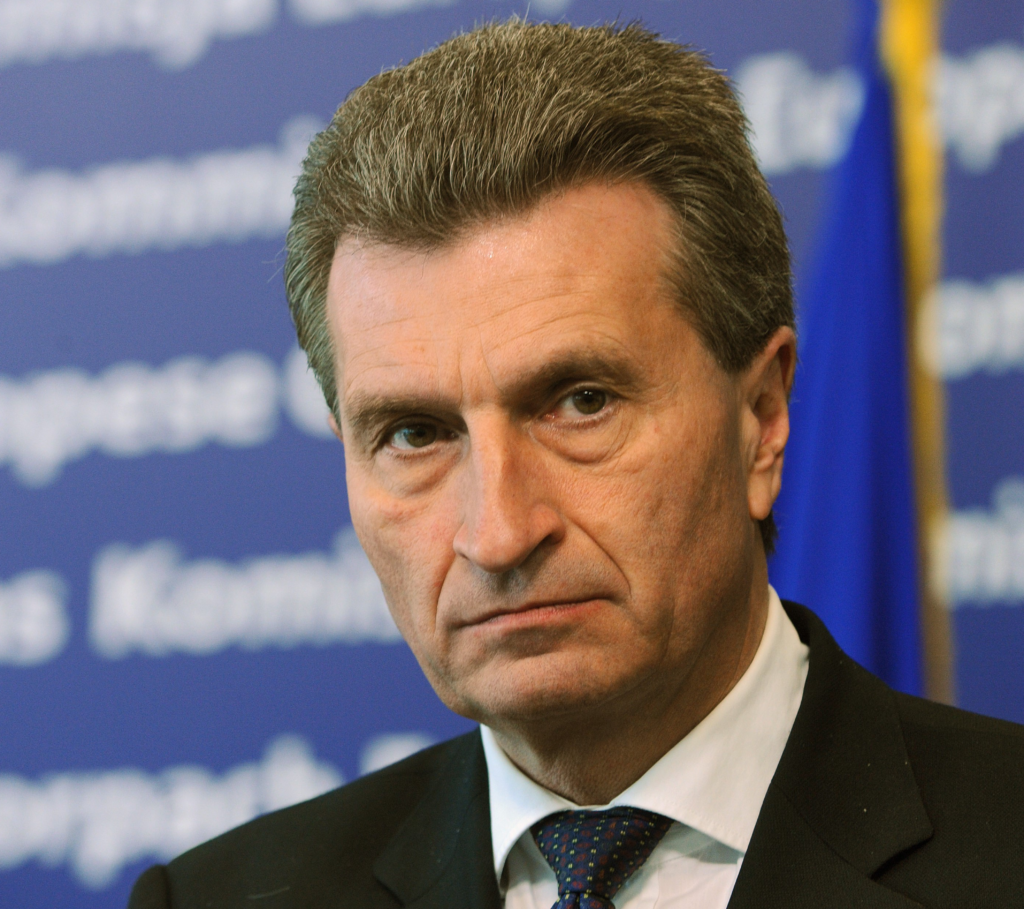China and the EU sign a key partnership on 5G, our tomorrow’s communication networks

|
context
In the future, everybody and everything will use 5G, the next generation of communication networks. By 2020 there will be more than 30 times as much mobile Internet traffic as there was in 2010. 5G won’t just be faster, it will also be the backbone of our digital future and the foundation of a trillion euro EU market in the Internet of Things, i.e. new functionalities and applications ranging from connected cars to smart homes. At the 2015 Mobile World Congress (MWC), the European Commission and Europe’s tech industry presented the EU’s vision of 5G technologies and infrastructure. This ambitious strategy gives the EU a strong voice in the next phase of 5G discussions at the global level that should lead to international agreements, including on standards. (see also the speech of Commissioner Oettinger at the event) Commissioner Oettinger will host a global workshop on 5G standards and spectrum with representatives from the US, South Korea, Japan and China during the ICT-2015 conference in Lisbon on 20 October 2015. The European Commission is investing €700 million through the Horizon 2020 Programme to support research and innovation in 5G. China is likely to be a major player in the development of 5G and also potentially the world’s largest market for 5G technologies, products and services. The country will also have a substantial role in establishing a 5G global standard. The agreement between the EU and China is therefore a further milestone in the global race to develop 5G networks. the agreement In the agreement signed today 28 September 2015, China and the EU, both parties commit reciprocity and openness in terms of access to 5G networks research funding, market access as well as in membership of Chinese and EU 5G associations. The full wording of the joint declaration signed by Günther Oettinger, European Commissioner in charge of the Digital Economy and Society, and Miao Wei, Chinese Minister of Industry and Information Technology is reproduced below. The main points agreed are
Moreover, both parties are committed to reciprocity and openness in terms of access to 5G networks research funding, market access as well as in membership of Chinese and EU 5G associations. EU companies, particularly the EU telecoms and ICT industry are likely to have easier access to the Chinese market. In particular, European companies will be able to access and participate in China’s publicly funded 5G research, development and innovation initiatives on the same terms as Chinese companies currently participate in the EU’s 5G activities.
|
|
JOINT DECLARATION ON STRATEGIC COOPERATION IN THE AREA OF THE FIFTH GENERATION OF MOBILE COMMUNICATION NETWORKS BETWEEN THE EUROPEAN COMMISSION AND THE MINISTRY OF INDUSTRY AND INFORMATION TECHNOLOGY OF THE PEOPLE’S REPUBLIC OF CHINA
|
| The European Commission, and the Ministry of Industry and Information Technology (MIIT) of the People’s Republic of China (hereinafter referred to as “two sides”) emphasised that the communication infrastructures are essential for the digital economy and society.
The two sides recognise the importance of the timely development of the fifth generation of mobile communication networks (5G) which will be the backbone of the future digital society, creating more and better employment opportunities, and contributing to a sustainable economic growth for the mutual benefit of the European Union (EU) and of the People’s Republic of China (China). Each side stressed the need to provide the organisations of the other side with comparable access conditions and participation in 5G publicly funded research, development and innovation as well as reciprocal market access in the field of communication networks. They agreed to report on a yearly basis about the effective participation of entities in the EU and in China and to solve potential problems together. They undertook to secure an equivalent level of industrial openness in the EU and in China for the 5G industrial associations that are steering the implementation of R&D, and notably the 5G Infrastructure Association and the IMT-2020 (5G) Promotion Group. The two sides envisage enhanced cooperation in the area of 5G, fostering global consensus on the definition of 5G, developing common interests in research activities, harmonising radio spectrum policy to ensure global interoperability and preparing global standards for 5G. The two sides also agreed to jointly work in the area of 5G on the following: 1. To strive to reach a global understanding, by the end of 2015, on the concept, basic functionalities, key technologies and time plan for 5G. 2. To work together to explore possibilities in cooperating and implementing joint research actions in the area of 5G and to facilitate bilateral participation of enterprises in 5G research projects in the EU and China. 3. To jointly promote global standardisation for 5G, in support of ongoing standardisation work in relevant organisations including 3GPP and the ITU. 4. To cooperate in facilitating the identification of globally harmonized radio frequency bands to meet the new spectrum requirements for 5G, and to reinforce cooperation in the context of the ITU and WRC. 5. To strive to explore jointly the possibilities for cooperative research on the services and applications for 5G, especially in the area of the Internet of Things (IoT). The two sides recognised the importance of public-private partnerships for the development of 5G and expressed support for the deepening of interactions and exchanges between the bilateral industry associations dealing with 5G, including the 5G Infrastructure Association and the IMT-2020 (5G) Promotion Group. Günther H. OETTINGER Commissioner For Digital Economy and Society, European Commission _________________________ MIAO Wei Minister of the Ministry of Industry and Information Technology of The People’s Republic of China _________________________ Done in Beijing, on 28 September, 2015 Photo credit: European Commission |

